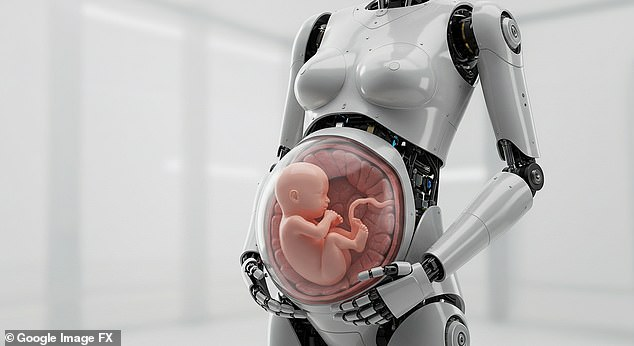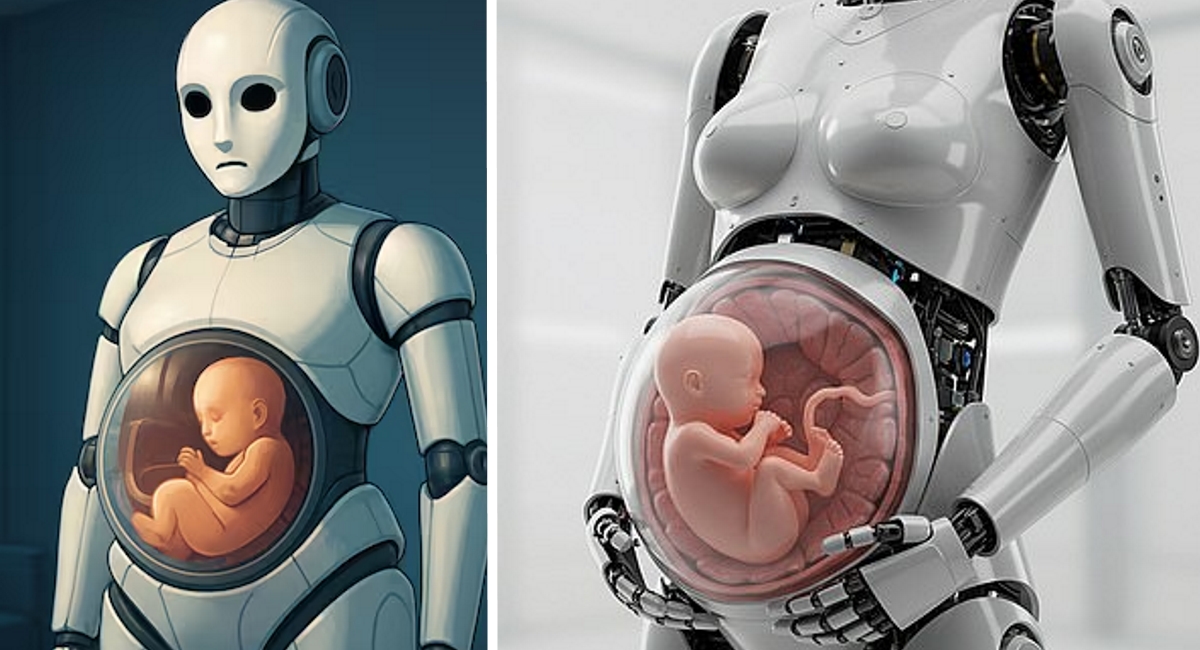When Chinese researchers confirmed they were preparing to test the world’s first artificial womb inside a humanoid robot by 2026, the announcement sent shockwaves through both the scientific and cultural world. It wasn’t just another piece of futuristic news. It was a glimpse of a world where birth itself could be redefined, a world where fragile premature babies might survive—but also where the very meaning of motherhood could change forever.
The design itself is both breathtaking and unsettling. Imagine a transparent pod, filled with liquid engineered to mimic amniotic fluid, while tiny sensors adjust oxygen, nutrients, and hormones minute by minute. This is not just theory: in 2017, researchers in Philadelphia kept premature lambs alive for weeks inside a sealed “biobag” environment, and Japanese teams have achieved similar results with goats. Now, Chinese scientists are preparing to scale it for humans—an experiment that will test not just technology, but the limits of society’s moral comfort zone.

Artificial wombs sound like sci-fi until you realize premature birth is still the leading cause of infant mortality. The ethical debate is coming faster than we think. #ArtificialWomb— Dr. Emily Carter (@DrEmilyCarter) August 15, 2025
The stakes are painfully real. Premature birth claims nearly a million infant lives worldwide every year. In the United States, about one in ten babies are born too soon, often spending months in intensive care where survival is uncertain. For parents who have lived through the grief of loss, the idea of a lifelike artificial womb isn’t frightening—it’s miraculous. “If this had been available when our daughter was born,” one mother told local media, “she might still be with us today.”
Scientists stress that the immediate purpose is medical, not revolutionary. Artificial wombs are being designed to act as a bridge, completing gestation when pregnancy is cut short. A recent analysis in Nature suggested that survival rates for extremely premature infants could rise dramatically if the technology proves safe. But as history shows, once the tool exists, it rarely stays confined to its original purpose. IVF was once a radical solution for infertility—today, it has brought more than eight million children into the world.
China announcing human trials for an artificial womb in 2026 is one of the biggest bioethics stories of our time. This isn’t just science—it’s philosophy, law, and humanity colliding. #Bioethics— The Future Forum (@FutureForumOrg) August 16, 2025
Not everyone sees salvation. For religious leaders across the globe, this is a red line. Statements from Christian and Muslim groups already denounce the idea as “tampering with creation.” European lawmakers are drafting resolutions to restrict trials, while in the United States, the debate is already spilling into the political arena. A Scientific American editorial cautioned against rushing forward, warning that artificial gestation could “reshape human life itself.”

Generational divides are also stark. A survey in the UK revealed that nearly half of Gen Z respondents supported artificial wombs for medical necessity, while fewer than one in five Baby Boomers did. The split echoes the early years of IVF, when public opinion was hostile before slowly shifting toward acceptance. Today’s younger generation seems more open to redefining reproduction—especially when framed as saving lives rather than replacing natural birth.
Artificial wombs could mean the end of surrogacy, the end of pregnancy risks, and a revolution in reproductive freedom. But at what cost to human connection? #ArtificialWomb— Prof. Nadia Shah (@ProfNadiaShah) August 16, 2025
But even if artificial wombs succeed scientifically, deeper concerns linger. What happens to the parent-child bond when birth occurs behind glass? Can holding a pod ever replace the intimacy of pregnancy? Some designers believe the answer lies in human-centered design. Dutch researcher Lisa Mandemaker has created prototype incubators that allow parents to touch, see, and interact with their child through transparent chambers. For her, the goal is not just survival, but connection.
The economic questions are equally unsettling. If China markets artificial wombs as a $12-lakh alternative to surrogacy, as suggested in a Times of India report, who will get access first? Will it be a life-saving hospital tool, or a luxury for the wealthy elite? Critics warn of a possible “biological class divide,” where natural birth is left for the poor while the rich outsource reproduction to machines.
The artificial womb debate isn’t just about babies—it’s about power, profit, and who controls the future of humanity. #FutureOfBirth— Global Ethics Watch (@GEthicsWatch) August 16, 2025
And yet, for every critic, there are families clinging to hope. Stories of mothers sitting by incubators, praying their tiny newborns will make it through another night, remind us why this research began in the first place. For those parents, the idea of artificial wombs isn’t dystopian—it’s a chance for survival, for birthdays that might otherwise never come.
The countdown to 2026 is already underway. Whether remembered as a medical miracle or a societal rupture, the world’s first artificial womb for humans is no longer fiction. It is here, growing in laboratories, forcing us all to ask what kind of future we are willing to create.





